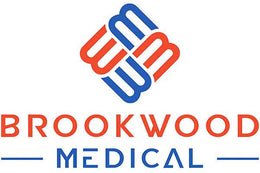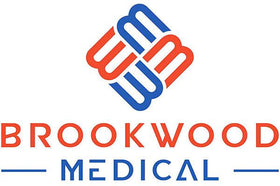Understanding Different Types of Face Masks: A Comprehensive Guide

In the wake of global health challenges, face masks have become an essential item for many people. From surgical masks to N95 respirators, the variety of face masks available today can be overwhelming. To make informed choices, it is crucial to understand the different types of face masks and their specific uses. This comprehensive guide will explore various face masks, including children's protective masks, helping you find the best options for your needs.
The Importance of Wearing Face Masks
Face masks play a vital role in minimizing the spread of respiratory infections. They act as a barrier, protecting the wearer and those around them from potential pathogens. Particularly during pandemics, wearing a mask can significantly reduce transmission rates, which is why understanding the types available is crucial for public health.
How Face Masks Work
Face masks are designed to filter out respiratory droplets, which are a primary mode of transmission for infectious diseases. When a person talks, sneezes, or coughs, tiny droplets can carry viruses and bacteria. Masks serve to catch these droplets, thereby reducing the risk of contamination. Different masks have varying levels of filtration efficiency and fit, influencing their overall effectiveness.
Overview of Face Mask Types
As you navigate through the world of face masks, it's essential to distinguish between the primary categories available. Here’s an overview of the most common types:
1. Surgical Masks
Surgical masks are the most recognizable face masks in healthcare settings. Made of multiple layers of fabric, they are designed to prevent the spread of germs. Surgical masks are primarily used by healthcare professionals and are effective at protecting patients during surgical procedures. However, they can also be employed in everyday situations to protect against airborne particles.
2. N95 Respirators
N95 respirators provide a higher level of protection compared to surgical masks. They are designed to fit snugly against the face and filter out at least 95% of airborne particles, including those that may be too small to be captured by a surgical mask. Because of their superior filtration, N95 masks are often recommended for frontline healthcare workers and individuals in high-risk environments.
3. Cloth Masks
Cloth masks became popular during the COVID-19 pandemic as a readily available option for the general public. They are made from various fabrics and can be washed and reused. While cloth masks can be effective in reducing the spread of droplets, their efficacy predominantly depends on the fabric used, the number of layers, and how well they fit the wearer’s face.
4. Children's Protective Masks
As schools and public spaces reopen, the need for children's protective masks has grown. These masks are specifically designed for smaller faces and often feature playful designs to encourage kids to wear them. Children's protective masks can vary from cloth masks to lightweight surgical options, providing adequate protection while ensuring comfort.
Choosing the Right Mask for Yourself and Your Family
Selecting the appropriate mask involves understanding the specific needs of you and your family members. Below are a few factors to consider:
- Purpose: Determine the intended use of the mask. Will it be for daily commutes, visiting crowded spaces, or healthcare utilization?
- Fit: A proper fit ensures effectiveness. Masks should snugly cover the nose and mouth without gaps.
- Material: The type of material can significantly affect a mask's filtration efficacy and breathability.
- Age Appropriateness: For children, ensure masks are designed for their smaller faces and are compliant with safety standards.
5. KN95 Masks
KN95 masks are similar to N95 respirators but are manufactured to Chinese standards. They provide a good level of filtration, capturing a substantial percentage of harmful particles. KN95 masks have gained popularity as a reliable alternative, especially where N95 masks are not available.
6. Face Shields
Face shields are transparent barriers that cover the entire face. While they don’t replace face masks, they can provide added protection, particularly in scenarios where social distancing is difficult. Face shields are often used in conjunction with masks, especially for children, providing an additional layer of defense.
7. Sports Masks
For athletes, sports masks offer a solution for protecting against airborne particles while engaging in physical activity. These masks are often designed to enhance breathability and comfort, allowing for better airflow during strenuous exercises.
Tips for Proper Mask Use
To maximize the effectiveness of face masks, it's essential to follow proper guidelines for their use:
1. Proper Donning and Doffing
When putting on or taking off your mask, wash your hands thoroughly or use hand sanitizer. Avoid touching the front of the mask, as it may be contaminated.
2. Regular Cleaning and Maintenance
For cloth masks, regular washing after use is key to maintaining cleanliness. Ensure masks are dried thoroughly before wearing again. For disposable masks, avoid reusing them to ensure maximum protection.
3. Monitor for Signs of Wear
Check your masks for any tears or degradation, particularly with cloth masks. If a mask becomes compromised, it is no longer effective and should be replaced.
4. Encourage Proper Use Among Children
When introducing children's protective masks, make it a fun and engaging experience. Use stories, games, or participate in crafting custom designs to help children feel more comfortable wearing them.
Understanding Regulations and Recommendations
Guidelines for mask-wearing can vary based on local and federal regulations, so it’s important to stay updated on the recommendations in your area. Additionally, consult with healthcare professionals when considering the best options for specific medical conditions or vulnerable populations.
Stay Informed
The COVID-19 pandemic has shifted perspectives on health and safety practices. New information continues to emerge, so keep abreast of updates from trusted health organizations like the CDC and WHO. Your awareness can play a significant role in your community's health.
A Final Thought on Masks
As we adapt to a world where face masks may become a standard part of our everyday lives, understanding the different types available is more crucial than ever. Whether you opt for surgical masks, N95 respirators, cloth masks, or children's protective masks, knowing the distinctions can help you make educated decisions not only for yourself but also for your loved ones. By choosing the right masks and following the proper protocols, we can collectively contribute to a safer and healthier environment for everyone.






